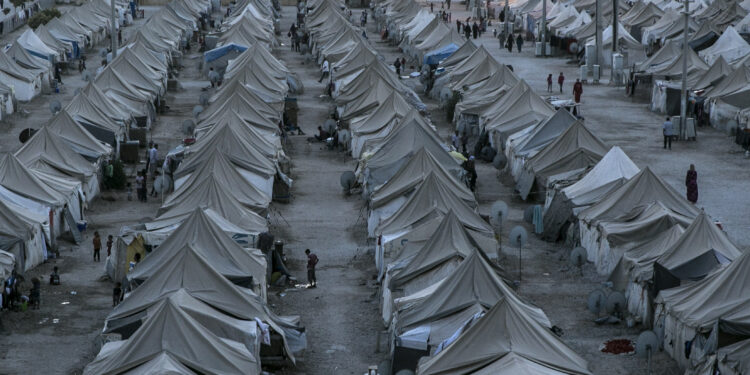Health of Women and Children in Disasters

Background
Humanitarian emergencies are natural disasters, man-made events or a combination of both that represent critical threats to the health, safety, security or wellbeing of a community (1). It is estimated that women and children account for more than three-quarters of all people affected by disaster (2), and approximately 1 in 5 women of childbearing age could be pregnant (3).
Due to disaster, basic health systems often collapse, including maternal, newborn and child health services. Moreover, disaster more often occurs in countries where maternal, neonatal and child mortality rates are likely to be already high (4). National health systems should therefore have emergency preparedness plans supported by well-trained professionals especially midwives to provide sexual reproductive, maternal, newborn, child and adolescent health that ensures quality health care even in the most challenging humanitarian environments (5).
Position
ICM recognises that disaster has a serious impact on the health system of an affected country, especially in the area of maternal, newborn and child health services.
ICM underscores the need to strengthen the preparation of midwives to deal with disaster in order to mitigate its effects.
ICM urges midwives to work with other healthcare professionals to prepare for, and to develop strategies for assuring adequate midwifery care for women during a disaster and its aftermath.
ICM urges governments to ensure education for midwives includes components that provide knowledge and raise awareness of the health problems of women and families both at the time of a disaster and in the mid- to long-term period afterwards.
Recommendations
ICM encourages member associations to:
- Recognise the importance of preparedness for disasters
- Expand the contents of midwifery education programmes to include health problems of women and families related to disasters
- Contribute to or conduct research to develop strategies to assuring appropriate midwifery care during and after disasters
- Aim to have representation, whenever possible, on committees forming policy on disasters at governmental level
Related ICM Documents
Other Relevant Documents
- Ager A, Stark L, Akesson B, Boothby N. 2010. Defining best practice in care and protection of children in crisis-affected settings: a Delphi study. Child development Jul- Aug; 81(4): 1271-86
- Harville E, Xiong X, Buekens P. 2010. Disasters and perinatal health: a systematic review. Obstetric Gynecology Survey Nov; 65 (11): 713-28
- ICN. 2006. Position Statement. Nurses and disaster preparedness.
- Pyone, Dickinson, Kerr et.al. 2015. Data collection tools for maternal and child health in humanitarian emergencies: a systematic review. WHO. Geneva. http://www.who.int/bulletin/volumes/93/9/14-148429/en/
- World Vision. 2012. Guide to maternal, newborn and child health and nutrition in Emergencies. Uxbridge, England. http://wvi.org/child-health-now/publication/maternal-newborn-and-childhealth-and-nutrition-emergencies
Adopted at Brisbane International Council meeting, 2005
Reviewed at Toronto International Council meeting, 2017
Due for next review 2023
(1) Guide to maternal, newborn and child health and nutrition in Emergencies. Uxbridge, England: World Vision; 2012 Available from: http://wvi.org/child-health-now/publication/maternal-newborn-and-child-health-and-nutrition-emergencies [accessed 28-02-2016]].
(2) Pyone, Dickinson, Kerr et.al. Data collection tools for maternal and child health in humanitarian emergencies: a systematic review. WHO. 2015 http://www.who.int/bulletin/volumes/93/9/14-148429/en/ [accessed 28-02-2017]
(3) Guide to maternal, newborn and child health and nutrition in Emergencies. Uxbridge, England: World Vision; 2012 Available from: http://wvi.org/child-health-now/publication/maternal-newborn-and-child-health-and-nutrition-emergencies [accessed 28-02-2016]].
(4) Pyone, Dickinson, Kerr et.al. Data collection tools for maternal and child health in humanitarian emergencies: a systematic review. WHO. 2015 http://www.who.int/bulletin/volumes/93/9/14-148429/en/ [accessed 28-02-2017]
(5) Guide to maternal, newborn and child health and nutrition in emergencies. http://www.wvi.org/sites/default/files/MNCH%20in%20Emergencies%20Guide%20FINAL_1 accessed 1 May, 2017
PS2011_008 V2017

